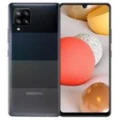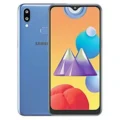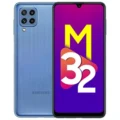Samsung Galaxy Fold
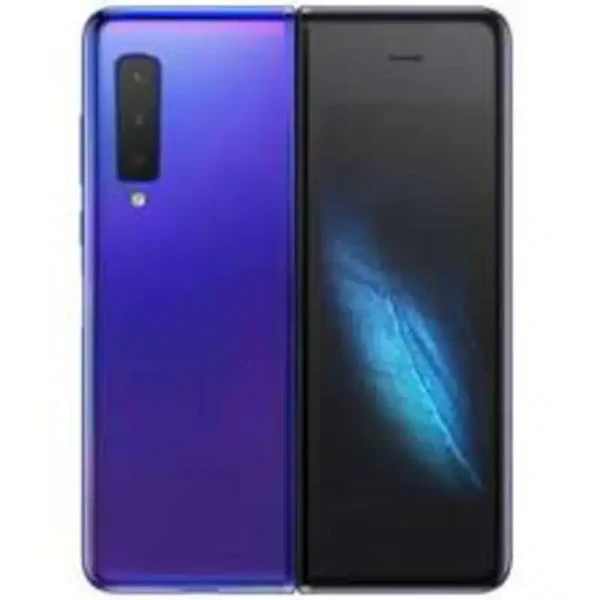


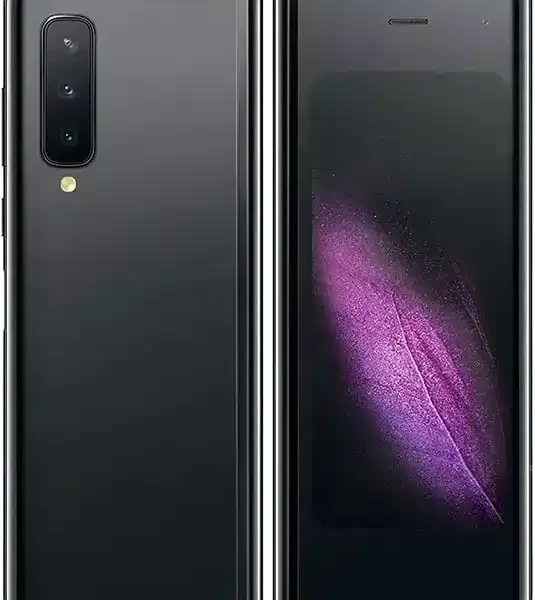
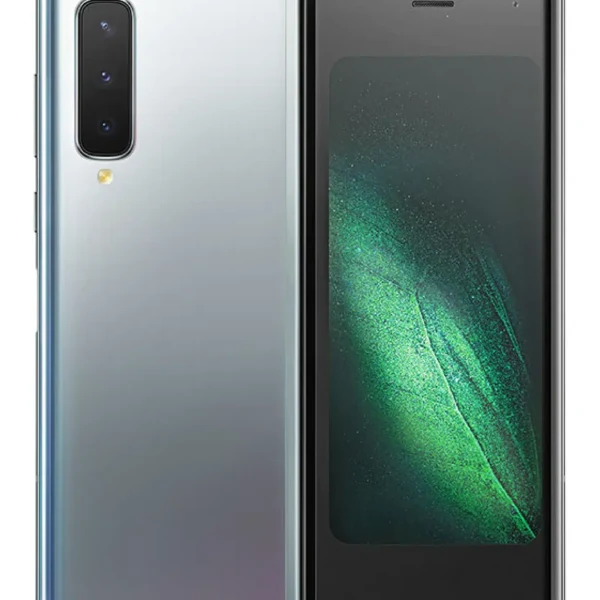
- : 12GB RAM Snapdragon 855
- : 7.3" 1536x2152 pixels
- : 4380mAh 15W15W
- : 16MP 2160p
Break free from the ordinary with the Samsung Galaxy Fold, the revolutionary smartphone that defies limitations. Unfold a breathtaking 7.3-inch Infinity Flex Display that transforms your mobile experience. Immerse yourself in movies, games, and apps like never before on a tablet-sized screen that fits comfortably in your pocket.
Do more with the first-ever S Pen on a foldable phone. Take notes with unmatched precision, unleash your artistic creativity, and navigate the expansive display with ease. The Galaxy Fold is also the world’s first water-resistant foldable phone, so you can unfold freely without worry.
Capture stunning photos and videos with a versatile camera system, perfectly suited for any lighting condition. Multitask like a pro with intuitive multitasking features, allowing you to open multiple apps simultaneously on the unfolded display.
The Galaxy Fold is more than a phone, it’s a statement. Experience the future of mobile technology today.
Here’s what makes the Galaxy Fold the perfect choice for you:
- Unfold a massive 7.3-inch display for an immersive entertainment and productivity experience.
- S Pen compatibility for natural note-taking and creative expression.
- Unbreakable design with the world’s first water-resistant foldable display (IPX8).
- Multitasking powerhouse to handle all your needs with ease.
- Cutting-edge camera system for capturing life’s moments in stunning detail.
Don’t just hold a phone, unfold your world. Order your Samsung Galaxy Fold today!
Do you want to know more about this phone? Visit the official website of the Samsung. The Link is here: SAMSUNG
Not Satisfied?
Still confused while choosing your Smartphone from Samsung? Go to the store, and choose another one of your choice.
Specs
Network
| 2G Network GSM 850 / 900 / 1800 / 1900 - SIM 1 & SIM 2 (dual-SIM) CDMA 800 / 1900 |
GSM 850 / 900 / 1800 / 1900 |
| 3G Network |
HSDPA 850 / 900 / 1700(AWS) / 1900 / 2100 HSDPA 850 / 1700(AWS) / 1900 / 2100 - SM-F900U |
| 4G Network | 1, 2, 3, 4, 5, 7, 8, 12, 13, 18, 19, 20, 25, 26, 28, 38, 39, 40, 41, 46, 66, 71 - SM-F900U |
| Speed |
HSPA 42.2/5.76 Mbps, LTE (6CA) Cat18 1200/150 Mbps |
LAUNCH
| Announced | February, 2025 |
| Status |
Available. Released 2019, September |
BODY
| Dimensions | Unfolded: 160.9 x 117.9 x 6.9 mm Folded: 160.9 x 62.9 x 15.5 mm |
| Weight | 276 g (9.74 oz) |
| Build | Glass front (folded), plastic front (unfolded), glass back, aluminum frame |
| SIMs SIM (Subscriber Identity Module) is a small card that contains mobile network subscriber's account information. This allows the phone using the card to attach to a mobile network. The SIM card is most commonly associated with GSM and UMTS mobile networks. Moving a SIM card from one phone to another allows a subscriber to switch mobile phones without having to contact their mobile network carrier. SIM cards can also be used by a phone to store limited amounts of data, such as phone numbers and text messages. |
Nano-SIM and eSIM |
Display
| Display Type Display Technology => A number of display technologies and types used in mobile phones => TFT (Thin Film Transistor), IPS (In-Place Switching), OLED (Organic Light Emitting Diode), AMOLED (Active-Matrix Organic Light-Emitting Diode), Super AMOLED (an even advanced version of AMOLED), Resistive Touchscreen (Resistive touchscreens contain two layer of conductive material with a very small gap between them which acts as a resistance), Capacitive Touchsceen (Capacitive touchscreen technology consists of a layer of glass coated with a transparent conductor) | Foldable Dynamic AMOLED, HDR10+ |
| Size | 7.3 inches, 162.6 cm2 (~85.7% screen-to-body ratio) |
| Resolution | 1536 x 2152 pixels (~362 ppi density) Cover display: Super AMOLED, 4.6 inches, 720 x 1680 pixels, 21:9 ratio |
PLATFORM
| Operating System OS => Every computer system run on a base software called Operating System (OS). Operating System controls all basic operations of the computer (such as smartphone, PDAs, tablet computers and other handheld devices). The Operating System allows the user to install and run third party applications (apps), apps are used to add new functionality to the device. | Android 9.0 (Pie), upgradable to Android 12, One UI 4 |
| Chipset Chipset is a group of integrated circuits designed to perform one or a more dedicated functions, often with real time computing constraints, Popular smartphones are equipped with more advanced embedded chipsets that can do many different tasks depending on their programming. | Qualcomm SM8150 Snapdragon 855 (7 nm) |
| CPU CPU (Central Processing Unit) mostly known as processors, CPU processes instructions in order to carry out certain functions that make your device operate properly. Processors are often described as the brain of computers, smartphones and tablets, Smartphones and tablets rely on processors to carry out their every task, Processors are an incredibly important factor in selecting any type of computing device, including your smartphone. | Octa-core (1x2.84 GHz Kryo 485 & 3x2.42 GHz Kryo 485 & 4x1.78 GHz Kryo 485) |
| GPU GPU (Graphics Processing Unit) is a single-chip processor designed to rapidly manipulate and alter memory to accelerate the creation of images in a frame buffer intended for output to a display, This includes things such as lighting effects, object transformations, and 3D motion. | Adreno 640 |
MEMORY
| Card Slot Memory Card Slot is a special slot for inserting a memory card. Memory cards allow you to expand the phone's built-in memory, A memory card (sometimes called a flash memory card or a storage card) is a small storage medium used to store data such as text, pictures, audio, and video, for use on small, portable or remote computing devices such as mobile phones, mp3 players, digital cameras. | No |
| Internal | 512GB 12GB RAM UFS 3.0 |
MAIN CAMERA
| Cameras Specs Today’s smartphones come equipped with a very comprehensive set of camera related specifications. Our smartphone, for many of us, has become our primary camera due to it being the one we always have with us. |
12 MP, f/1.5-2.4, 27mm (wide), 1/2.55", 1.4µm, dual pixel PDAF, OIS 12 MP, f/2.4, 52mm (telephoto), 1/3.6", 1.0µm, AF, OIS, 2x optical zoom 16 MP, f/2.2, 12mm (ultrawide), 1/3.1", 1.0µm |
| Video | 4K@60fps, 1080p@60/240fps (gyro-EIS), 720p@960fps (gyro-EIS), HDR10 |
| Camera Features |
LED flash, HDR, panorama |
SELFIE CAMERA
| Cameras Specs Today’s smartphones come equipped with a very comprehensive set of camera related specifications. Our smartphone, for many of us, has become our primary camera due to it being the one we always have with us. |
10 MP, f/2.2, 26mm (wide), 1/3", 1.22µm 8 MP, f/1.9, 24mm (wide), 1.22µm, depth sensor Cover camera: 10 MP, f/2.2, 26mm (wide), 1/3", 1.22µm |
| Features |
HDR |
| Video | 4K@30/60fps, 1080p@30fps, gyro-EIS |
SOUND
| Loudspeaker | Yes, with stereo speakers |
| 3.5mm jack |
No 32-bit/384kHz audio Tuned by AKG |
COMMS
| WLAN |
Wi-Fi 802.11 a/b/g/n/ac/6, dual-band, Wi-Fi Direct |
| Positioning |
GPS, GLONASS, GALILEO, BDS |
| Bluetooth Bluetooth is a wireless communications technology for exchanging data between mobile phones, headsets, computers and other network devices over short distances without wires, Bluetooth technology was primarily designed to support simple wireless networking of personal consumer devices. | 5.0, A2DP, LE, aptX HD |
| Infrared Infrared connectivity is an old wireless technology used to connect two electronic devices. It uses a beam of infrared light to transmit information and so requires direct line of sight and operates only at close range. | |
| USB | USB Type-C 3.1 |
| NFC NFC (Near field communication) is a set of standards for smartphones and similar devices to establish peer-to-peer radio communications with each other by touching them together or bringing them into proximity, usually no more than a few inches. | |
| Radio |
Features
| Sensors Sensors are electronic components that detects and responds to some type of input from the physical environment. The specific input could be light, heat, motion, moisture, pressure and location, The output is generally a signal that is converted to use in computing systems, a location sensor, such as a GPS receiver is able to detect current location of your electronic device. |
Fingerprint (side-mounted), accelerometer, gyro, proximity, compass, barometer ANT+ Samsung DeX (desktop experience support) |
BATTERY
| Battery Type Battery Type => Cell phones run on various kinds of batteries depending on the manufacturer, phone size or shape and features. There are basically four types of cell phone batteries => Lithium Polymer, Lithium Ion, Nickel Metal Hydride and Nickel Cadmium. | Li-Poly (Lithium Polymer) |
| Capacity Battery Capacity is a measure (typically in Amp-hr) of the charge stored by the battery, and is determined by the mass of active material contained in the battery. The battery capacity represents the maximum amount of energy that can be extracted from the battery under certain conditions. | 4380 mAh |
| Placement | non-removable |
| Charging The functionality responsible for recharging batteries in portable devices, such as mobile phones, significantly influences both battery lifespan and the practicality of daily product usage.The charging process, encompassing factors like voltage, current, and completion actions, is contingent upon the battery's size and type.Contemporary battery chargers dynamically adjust charging parameters based on the battery's current charging state. Charging an empty battery poses no safety risk, allowing for a quicker charging process. Consequently, many charging speed benchmarks, including ours, specify the battery level achieved after a 30-minute session on an empty battery.Standard chargers with a power output of 5V/1A, equivalent to 5W, serve as a baseline, with anything surpassing this speed classified as quick or fast charging. | 15W wired 15W wireless 4.5W reverse wireless |
MISC
| Colors |
Space Silver, Cosmos Black, Martian Green, Astro Blue |
| Model | SM-F900F, SM-F9000, SM-F900W, SM-F900U, SM-F900N, SM-F900U1 |
| SAR SAR (Specific absorption rate): Each GSM handset has a radio transmitter and receiver in order to operate in the wireless GSM network. That transceiver is manufactured so that when used next to the ear and when worn on the belt, it won't exceed the limits for exposure to radio frequency energy set by the authorities.The authorities in question here are the Federal Communications Commission (FCC) of the U.S. Government, Industry Canada of the Canadian Government (IC), and the Council of the European Union. |
0.41 W/kg (head) 1.39 W/kg (body) |
| SAR EU Each GSM handset has a radio transmitter and receiver in order to operate in the wireless GSM network. That transceiver is manufactured so that when used next to the ear and when worn on the belt, it won't exceed the limits for exposure to radio frequency energy set by the authorities.The authorities in question here are the Federal Communications Commission (FCC) of the U.S. Government, Industry Canada of the Canadian Government (IC), and the Council of the European Union. |
0.49 W/kg (head) 1.58 W/kg (body) |
| Price |
About 1750 EUR |
TESTS
| Performance |
AnTuTu: 363016 (v7) GeekBench: 11028 (v4.4) GFXBench: 32fps (ES 3.1 onscreen unfolded) |
| Display | 557 nits max brightness (measured) |
| Loudspeaker | Voice 70dB / Noise 73dB / Ring 90dB |
| Battery (old) | Endurance rating 90h |
Reviews
Disclaimer Note
We strive to maintain accurate and up-to-date content on our website for general information purposes only. Please refrain from using the material for business, legal, or any other decisions.


